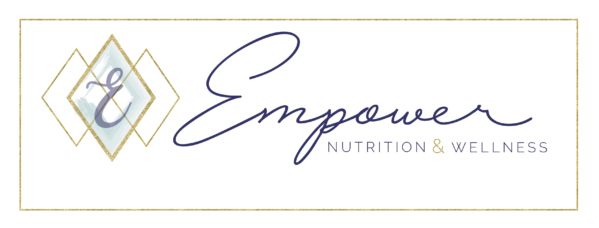The daily struggle of Irritable Bowel Syndrome (IBS) is not fun for anyone involved. The fear of new foods, the anxiety of finding the closest bathroom at every new destination, it is quite overwhelming and can lead to many stressful situations. The stress involved with trying to live with IBS can actually further impact the diagnosis. According to a study published in the World Journal of Gastroenterology, some evidence suggests that psychological stress may influence intestinal sensitivity and worsen symptoms of IBS (Qin, Cheng, Tang, and Bian ,2014, p.14126). It is a nasty cycle. These situations can leave one rather irritated with an irritated bowel. I’ve been asked more than a few times about the FODMAPs diet, how one goes about getting started and how these dietary changes are maintained.
What is FODMAPs? According to the Academy of Nutrition and Dietetics, The FODMAPs diet is designed to temporarily eliminate Fermentable Oligosaccharides, Disaccharides, Monosaccharides, and Polyols. These terms translate into specific foods that may cause or worsen symptoms of IBS. This is a potential way to manage the diagnosis through diet. After the elimination period, the high FODMAP foods are added back into the diet one at a time to hopefully identify the trigger foods. Some research has shown that the FODMAPS diet may help to alleviate symptoms of IBS by identifying foods that may aggravate the bowel.
Some foods with a high FODMAP content include, garlic, pears, Xylitol, foods containing lactose and high fructose corn syrup. Check out The Academy of Nutrition and Dietetics website to review a list of other high FODMAP foods. https://www.eatright.org/health/allergies-and-intolerances/food-intolerances-and-sensitivities/what-is-the-low-fodmap-diet
The biggest question is typically, the “how?” How does one adapt recipes while eliminating foods during the first phase? When I first started researching FODMAPs, my first thought was, “Whoa.” The initiation of this diet is indeed a process. My curious nature kicked in and I got to work looking into how one can remain creative in the kitchen while working through the FODMAPs diet. After review of the plan and trial and error with recipes, I was able to determine a few tips for starting the elimination phase and working your way through FODMAPs.
1. For anyone starting FODMAPs, the first thing to do is to re-evaluate routines and food staples in the home. Identify the high FODMAP foods and determine appropriate substitutions. Then, make a list. Never shop, I repeat, never shop without a list-FODMAPs or no FODMAPs. I am a firm believer that a trip to the grocery store does take some effort. I don’t mean that you should spend hours at the store, but you should know what you’re putting in your cart. You have to go prepared.
2. Something that really stood out to me was the omission of onions and garlic during the elimination phase. Those are two heavily used flavor enhancers, not to mention a typical suggestion for healthy alternatives to added salt. That was a tough one. Fear not! The greens of green onions are permissible and do add a nice flavor in place of an onion. Other herbs do help to season food quite nicely, as usual. Italian seasoning, oregano, and basil stirred into pureed, crushed, or diced tomatoes blend together nicely for a flavorful sauce, no onions or garlic needed. Looking for more of a kick? Canned tomatoes with chiles are a good option for a spicier dish or salsa substitute.
3. Cheese! Cheese is not completely eliminated but lactose is. Hard cheese such as cheddar and Swiss are typically lactose free. Cabot is one brand of lactose free cheese that I personally enjoyed even before looking into the FODMAPs diet. You can check out their flavors at https://www.cabotcheese.coop/. Even when choosing lactose free, remember the recommended serving size of cheese is approximately one ounce.
4. Portion size remains important. FODMAPs may seem as easy ascswapping this for that, but I assure you there is more to think about. A low FODMAP food can quickly become a high FODMAP food in too large a quantity. Moderation and a healthy variety are crucial to appropriately getting through the elimination phase.
An important consideration when thinking about the FODMAPs diet is that it is not the cure for IBS. The intention is not to avoid all high FODMAP foods indefinitely. The ideal result will be identification of foods that do trigger symptoms in order to avoid or limit those specific foods. It is necessary to understand that the elimination phase is temporary, adequate nutritional balance is an important part of a healthy lifestyle.
The FODMAPs diet is not for everyone. Starting this journey under the proper guidance will ensure you continue to give your body what it needs while determining what you should avoid or limit. Seek consult from your Primary Care Provider, Gastroenterologist, and Registered Dietitian.
The complexity of this diet goes beyond the direction of just this post. Check out our website for contact information to schedule and initial consult for individual guidance if the FODMAPs diet is appropriate for you. https://liveempowered365.com/private-and-group-services/
References:
King, MPH, RDN, CNSC, LD, Kristi. (2016). What Is The Low FODMAP Diet? Academy of Nutrition and Dietetics. Retrieved from https://www.eatright.org/health/allergies-and-intolerances/food-intolerances-and-sensitivities/what-is-the-low-fodmap-diet
Qin, Hong-Yan, Cheng, Chung-Wah, Tang-Xu-Dong, Bian Zhao. (2014). Impact of Psychological Stress on Irritable Bowel Syndrome. World Journal of Gastroenterology, 20 (39), 14126-14131. https://www.ncbi.nlm.nih.gov/pmc/articles/PMC4202343/
